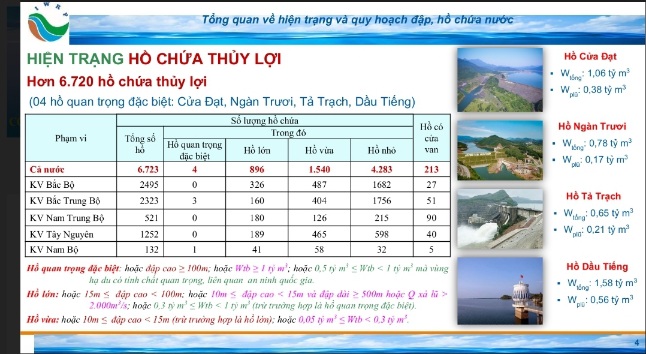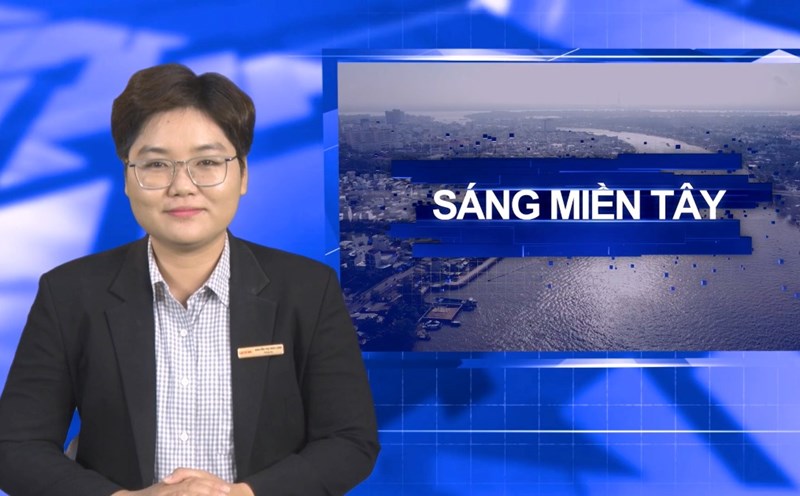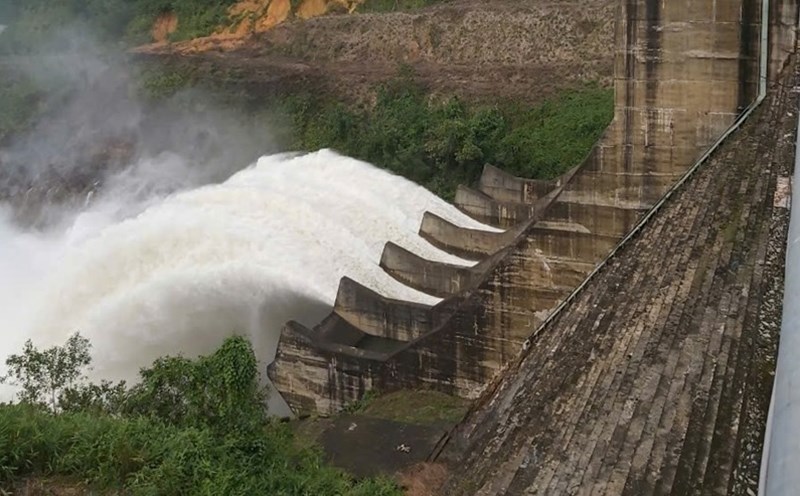The current situation of reservoirs has many potential risks.
According to statistics from the Department of Irrigation (Ministry of Agriculture and Rural Development - NNPTNT), the country currently has 7,315 dams and irrigation reservoirs with a total storage capacity of about 15.2 billion cubic meters (m3) of water. Irrigation reservoirs "shoulder" many important tasks such as: Providing water for agricultural, industrial and domestic production, combined with flood reduction and multi-purpose service such as providing water for power generation, creating space for solar power development, aquaculture, tourism development, etc.
However, Vietnam's dam system is currently facing a series of challenges: Unusual rains and floods, flash floods due to climate change... Many structures have degraded, causing great safety risks...

On the morning of November 19, 2024, speaking at the forum "Improving the effectiveness of information, warning, ensuring safe operation of dams and reservoirs in the new situation" organized by the Ministry of Agriculture and Rural Development in coordination with the Institute of Water Resources Planning and the Association of Large Dams and Water Resources Development, Mr. Do Van Thanh - Director of the Institute of Water Resources Planning said: Currently, many dams and reservoirs in our country have been built for over 30 years, causing damage, degradation, and sedimentation of the reservoir bed. Many reservoirs have been converted to serve multiple purposes, requiring recalculation of tasks and design parameters.

Furthermore, some large reservoirs have been built with flood maps but their downstream flood discharge capacity has not been assessed; many small reservoirs do not have plans to ensure dam safety and prevent downstream floods. Flood discharge corridors downstream of some large reservoirs have been encroached upon, the flow has narrowed, and the designed flood discharge is not guaranteed, causing downstream flooding during flood discharge operations.
In addition, the work of forecasting and warning of rain, floods, and water sources to the lake is still limited. In addition, the organization of the management and exploitation apparatus; the work of modernizing management, operation, and ensuring dam safety is still limited...

Urgent solutions in the new situation
Faced with the above challenges, in the current new situation, it is necessary to have synchronous solutions for building and perfecting policies; reviewing and perfecting the system of technical regulations, standards, and technical economic norms for surveying, designing, constructing, and managing the operation of dams and reservoirs in accordance with the new situation.
According to the Department of Irrigation (Ministry of Agriculture and Rural Development), along with water security, dam and reservoir safety are identified as important national issues. However, currently, regarding the operating procedures of irrigation reservoirs, some approved operating procedures have not been reviewed, adjusted or supplemented for more than 10 years. For reservoirs with civil activities in the reservoir bed and flooded downstream, operating according to the operating procedures is difficult.
Regarding specialized hydrometeorological monitoring and reservoir operation monitoring, up to now, 17% of the reservoirs have been installed with specialized hydrometeorological monitoring equipment and reservoir operation monitoring equipment. These are effective support devices for directing and operating the reservoir according to approved operating procedures and actual developments. However, many large reservoirs have not yet been fully equipped with equipment or have been installed but are damaged...
Thus, with the current extreme flood conditions, reservoirs that have not been designed with flood frequencies according to international practices will have a higher risk of being unsafe when there are large floods, exceeding the design frequency, inspection frequency...











